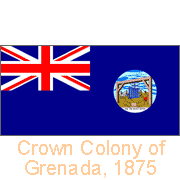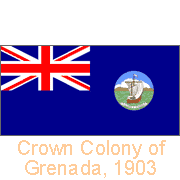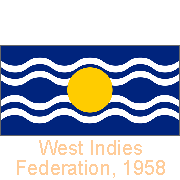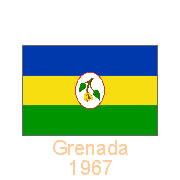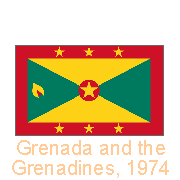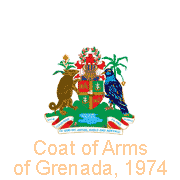Flag History of Grenada
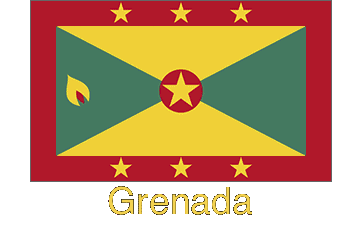
A Flag history of Grenada
The Colonial flag of Grenada from 1875 until 1903 was the British Blue Ensign with a badge depicting a sugar cane mill moved by oxen and dark-skinned workers. It had the Latin motto “Hae Tibi Erunt Artes”, from Virgil’s poem “Aeneid”, meaning “These will be your arts”. The badge was changed in 1903, probably because of its obvious association with slavery: many slaves had lost a hand when it became entangled while passing bundles of sugar cane through the rolls. The Colonial flag of Grenada from 1903 was the Blue Ensign with the badge now depicting a ship in full sail, possibly that of Columbus, who discovered the island on his third voyage. The Latin inscription beneath the ship “Clarion e Tenebris” means “Light out of Darkness”.
you may then send it as a postcard if you wish.
The West Indies Federation was formed in 1958 out of the then British colonies in the Caribbean: Jamaica, the Caymans and Turks and Caicos Islands, Trinidad and Tobago, Barbados, Antigua, Montserrat, St. Kitts-Nevis-Anguilla, Grenada, St Vincent, St Lucia and Dominica. It did not include the Bahamas and the British Virgin Islands. It was envisaged that the Federation would become independent from Britain as a single state; however, it collapsed in 1962 due to internal political conflicts. Its flag, designed by Eda Manley, was a blue field bearing four equally-spaced horizontal wavy lines with a gold disk over the middle two lines in the centre of the flag, representing the Caribbean Sea and the region’s sunshine.
In 1967 Grenada became a British Associated State. It adopted a blue-yellow-green flag, representing the sea, sun, and vegetation, and, in an oval on the central stripe, the nutmeg, Grenada’s most important export article. And upon Grenada’s independence, on 7 February 1974, Grenada’s current flag was officially introduced. It has a rather unusual design, employing the Pan-African colours, representing Grenada’s African identity. Yellow stands for the sun, wisdom and the friendliness of the people, green for the vegetation and agriculture, while red is for courage and vitality. The seven stars stand for the country’s seven parishes: Saint George (the capital, represented by the central star), Saint John, Saint Mark, Saint Patrick, Saint Andrew, Saint David and the Grenadines (the small islands stretching from the main island to the Martinique Channel). On the green triangle at the hoist is nutmeg, the most important export article.
The official Coat of Arms of Grenada is a shield divided into four parts by a golden cross. Its colours, red, gold and green, are of the National Flag with the same symbolism. The cross refers to Christianity, and in its centre is the Santa Maria, Columbus’ flagship, representing Grenada’s sighting by Christopher Columbus in 1498 and the continuing link with yachting and tourism. A lion on a red field is shown in the upper left and lower right sections of the shield, symbolising strength and the unswerving determination to face the challenges of nationhood with courage and resourcefulness. The green fields display a golden crescent moon and a Madonna Lily in the upper right and lower left sections. Since its sighting by Columbus, Grenada was dedicated to Mary of the Immaculate Conception. In her honour, the island was first named “Conception Island”. The shield is supported by a Tattoo or armadillo and a Grenada Dove. A ribbon displays the national motto: “Ever conscious of God we aspire, build and advance as one people”.


